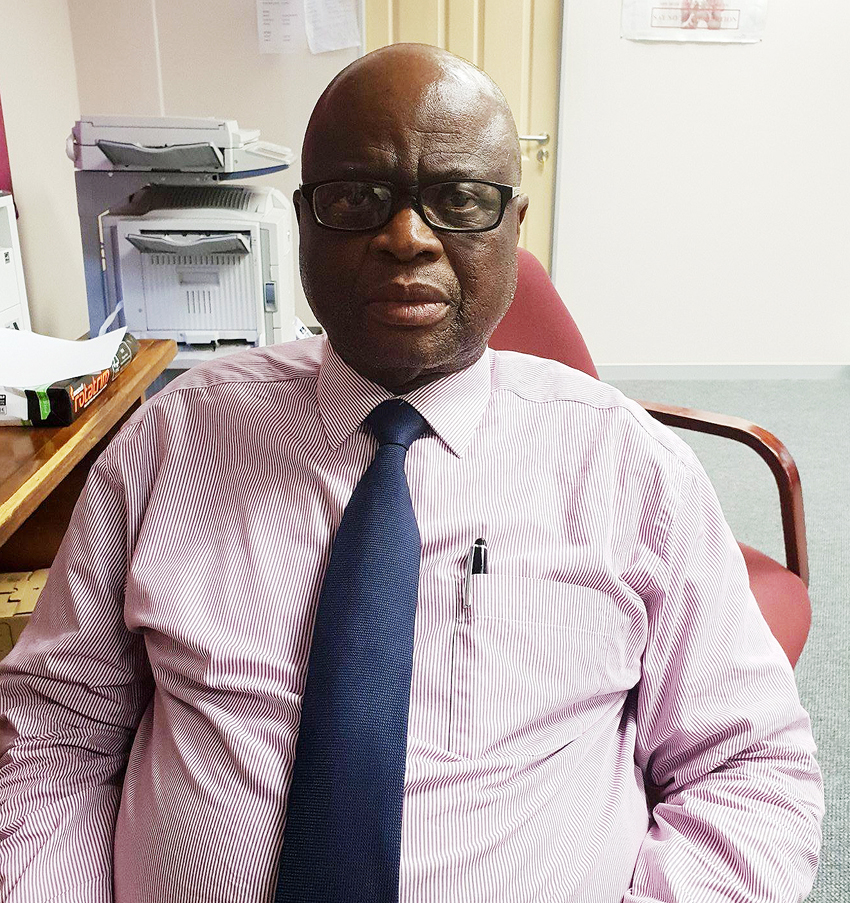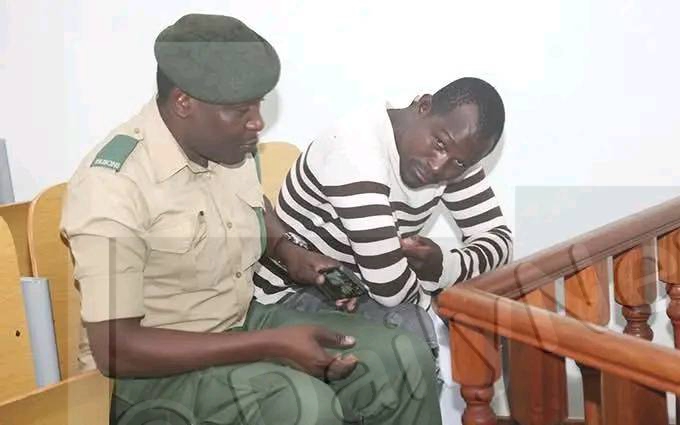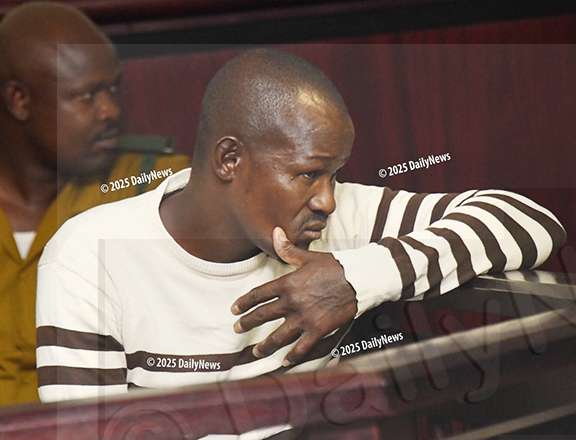Sedudu shooting Inquest - FINAL DAY
25 Nov 2021
Reporters Mooketsi Mojalemotho and Keamogetse Letsholo give a daily account of the proceedings of the enquiry into the deaths of Namibians Martin Nchindo, Ernest Nchindo, Tommy Nchindo and Zambian Sinvula Munyeme who were shot by Botswana Defence Force anti-poaching unit on November 5, 2020. The investigation ends on November 26
Yesterday was the ninth and final day of the Investigation. The Investigating Officer Assistant Commissioner Kutlwano Eanya became 35th and witness in the inquest reports Keamogetse Letsholo He talked about the report of the shooting and the dead men from the late Superintendent Fanie; that it was essentially a confrontation Between members of the Botswana Defence Force (BDF) and four men believed to be poachers and that the incident was said to have occurred around 2000hrs.
“On the same day I received the report I departed Francistown for Kasane the where I he joined Supt Fanie and Inspector Josiah,” he stated. He found the two having already attended to the scene, collected exhibits, and taken the bodies to the mortuary.
They showed him the exhibits for appreciation. “The four deceased persons were not yet identified and we made arrangements to lift the fingerprints in order to be able to trace their relatives but in a short time we received calls from Namibia suggesting that the deceased might have relatives there.
I then communicated with deputy commissioner Simasiku as we always do and he indicated that he would bring the people he suspected were related to the deceased,” Mr Eanya told the court.
He said on November 9, Mr Simasiku arrived with Charles Nchindo, Cassius Mwala and Mwanga (a police officer). Along with the late Mr Fanie, they all went to the mortuary for identification of the deceased persons. “How were the deceased identified because the court was told that the identifiers were only allowed to view faces?” askedd deputy director of Prosecutions Mr Kabo Leinaeng.
“Yes we only allowed for faces to be seen as the deceased we kept as exhibits and investigations were on-going, ” he responded “Does the procedure apply to any other body that is kept as an exhibit?” asked Mr Leinaeng, and Mr Eanya responded in the affirmative.
He continued to tell the enquiry that after the identification process, the bodies were taken to Francistown on November 12 for postmortem.
The Namibian government sent Dr Amis in addition to Mr Simasiku, Warrant Officer Mafwila and “the other police officer” to represent them. “Before postmortem the bodies were identified by Charles Nchindo and after identification Dr Mabaka told the relatives that they were not allowed during postmortem.
Did he explain to them why?” asked Mr Leinaeng. “Yes he said according to medical ethics only the pathologists, doctors, mortuary attendant and police officers were allowed during postmortem,” responded deputy Commissioner Eanya.
He said Dr Mabaka proceeded with the postmortem while Insp Josiah was taking photos. Mr Leinaneng then challenged him to comment on the complaint that the Namibian crime scene investigator was not allowed to take photos.
Mr Eanya confirmed and explained that the investigator was however allowed to take notes “because according to the law the host country is the lead investigator and those invited have no powers to take photos during an investigation as such whatever they want to do they have to seek authority”.
“Have you had a chance to go outside Botswana to conduct a joint investigation? Asked Mr Leinaneng again. In response Mr Eanya said indeed he travelled to South Africa in 1996 for a joint investigation.
“On arrival there we were briefed and told that we were not allowed to take photos and whenever we needed any we were were to be given copies.
Similarly, in 2010 I went to Zimbabwe on a joint investigation and the same procedure applied,” he explained Going back to leading his evidence, Mr Eanya told the court that at the completion of the postmortem the Botswana Police bought coffins for the deceased, who were repatriated to Namibia on November 15.
“A joint investigation team was formed and Senior Assistant Commissioner Busang Lesola the then Director of CID core-chaired the team with Namibia’s Deputy Commissioner Sydney Philander and they briefed us on what the investigations would entail and how,” he said.
He explained that it was during the course of the investigation that the Namibian scuba divers were roped in to join BDF divers to search the river as it was alleged that the deceased were armed and the BDF members had allegedly responded to a shot from the deceased’s side.
“After a brief for the divers of the two countries, they marked the area where they were going to search and the search was conducted for about 15minutes. During the search the hippos started to misbehave becoming a threat to the divers,” he told the court.
At that point Chief Inspector Otto of NAMPOL and Staff Sergeant Bolotsang of BDF assessed the situation and advised that it was no longer safe to continue because of the hippos and crocodiles. “After the advice the chairperson and co-chair instructed that the search be called off and the scuba divers from Namibia were taken back to their country. Nothing was found during the search,” he said.
Mr Leinaeng asked him if during the investigation anything was taken for ballistic assessment, and he said it was so. “Much has been said about the Botswana authorities failing to take BDF guns for ballistic what is your take?” Mr Leinaeng asked.
“We didn’t take the BDF guns because at the initial stage the BDF members admitted that they shot and killed the four men, there was no dispute about them shooting,” responded Mr Eanya. “You mentioned that it is common practice that those who participate in joint investigation from other jurisdictions are not allowed to take photos, can you confirm,” asked the deputy Director DPP.
“Yes because when law enforcement officers cross into another country their powers cease and there is nohow they can conduct investigations in another country,” he said. “Does this practice apply to pathologists and medical doctors?” asked Mr Leinaeng to which Mr Eanya responded in the affirmative. Asked if there was anything to add to his evidence in chief, Mr Eanya said regarding the elephant tusks another case of unlawful possession of government trophy by the four men was opened.
At the invitation for questions the Namibian Prosecutor, Mr Bornface Konga asked the witness to elaborate on the issue of the informer who was allegedly appointed by Botswana Police and what requirements were needed for one to be an informer.
Mr Eanya explained that in any instance where information was received from an informer the law protected such persons and they could not be called to give evidence. “Any payment?” asked Mr Konga and Mr Eanya responded that circumstances varied.
“You have told this court that your colleagues from Namibia were not allowed to participate in the investigations as their powers had ceased, is it correct,” asked Zambezi Regional Council chairperson, Mr Mating Simushi. Mr Eanya responded that it was correct.
Mr Simushi then asked if there was such agreement in writing. “The joint investigation approach is that officers from another country just observe and if there is anything they need the host country avails it.” ends
Source : BOPA
Author : Keamogetse Letsholo and Mooketsi Mojalemotho
Location : KASANE
Event : Inquest
Date : 25 Nov 2021








